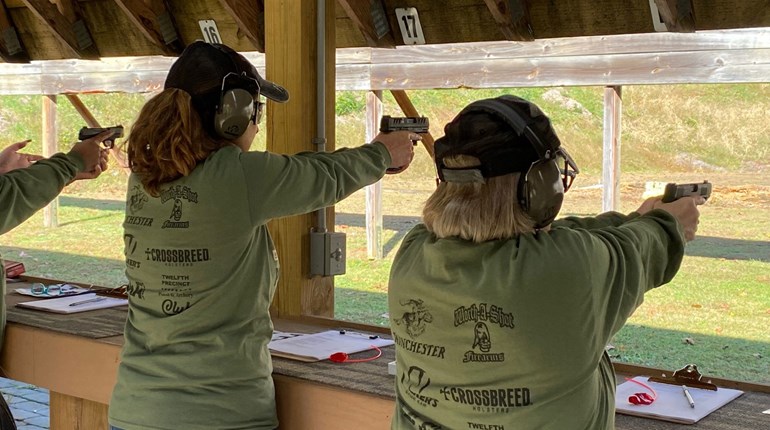
Turkey hunters continue hunting when the vast majority of sportsmen and women have put their rifles, shotguns and bows away. To turkey hunters, the season is far from over. Spring not only brings one additional hunting opportunity, but some turkey hunters also plan multiple spring hunts for the various subspecies of turkey. There are almost as many subspecies as there are ways to cook your bird!
There are five North American subspecies and one Central American subspecies of turkey. The North American turkey species consist of the Eastern, Rio Grande, Merriam’s, Gould’s and Osceola. The Central American species is the Ocellated turkey. Each one of these birds have their own unique qualities, traits and hunting challenges.
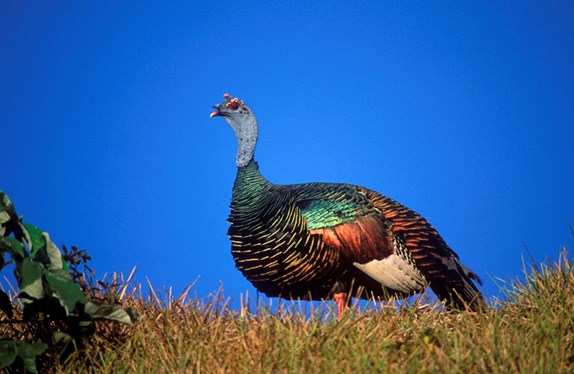
Like judging a trophy whitetail deer by the size of its antlers, a turkey is judged by its beard and spurs. The longer the beard and spurs, the better the trophy. A turkey’s beard can be up to 11” to 12” in length. Beards of 6” to 8” are the most common length.
Most jurisdictions require that the proof of sex is kept with the bird. A majority consider the beard proof of sex. The beard is a group of modified feathers that extend out of the middle of the breast and hang toward the ground. The beard is almost always black and can best be described as having the texture of horsehair.
It is not all that uncommon to see a bearded hen when turkey hunting. A bearded hen is considered a Tom and is legal to take in most gobbler-only areas. Just remember—the beard must stay attached to the breast. Many hunters have inadvertently violated the law by removing the beard when they breast out the bird. When breasting out a turkey, leave the small patch of skin around the beard so it remains attached.
A Jake is an immature Tom. Jakes are up to one year old and have a very small beard. They are considered legal birds in gobbler-only areas. Jakes can be confused with hens, but look closely and the “button” beard will give it away. Always check your local laws prior to shooting a bird.
Hens nest on the ground, which makes them very susceptible to predation. Fortunately, hunting season ends before the hens lay their eggs, so all turkeys roost in the trees. As sunset approaches, turkeys travel from their feeding area to the roost. At sunrise, they fly down from their roost and make their way to feeding areas.
If a hunter can find the roost, they can position themselves between the roosting tree and feeding area. It can be easy to find a roost if you have the right call. Blowing an owl call at dusk can make the turkeys gobble. I’ve used a barred owl call and have had much success in locating turkey roosts.
So, what type of turkey would you like to have on your springtime menu? There are four species of turkeys that are within easy reach of most hunters in the United States. But be aware—hunting turkey does have consequences. It only takes one hunt to become addicted! I have never met anyone, after their first time calling up a turkey, that did not become an avid turkey hunter.
Eastern Wild Turkey
The Eastern wild turkey is the most abundant turkey species, topping the list with more than 5 million birds. These turkeys can be found in the eastern United States and Canada, residing in 40 states and numerous Canadian provinces. The abundance of this subspecies gives the turkey hunter many opportunities to pursue.
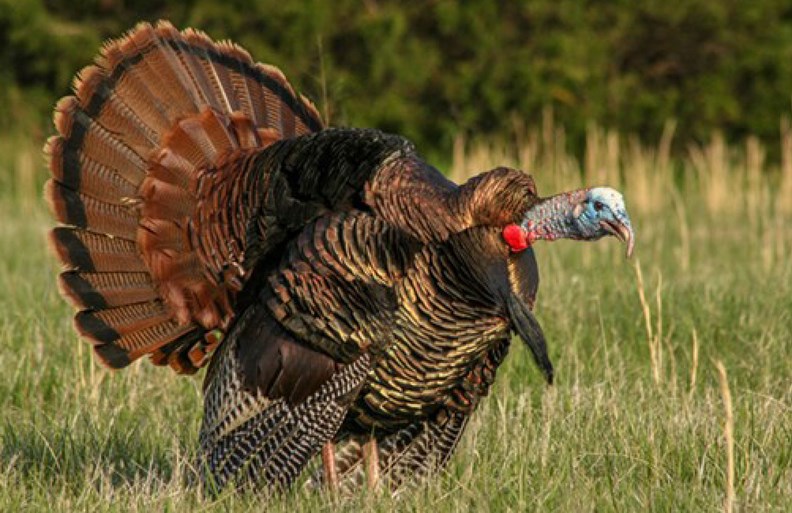
The Eastern turkey has an iridescent bronze body with white and black bars on its wings and brown tips on its tail feathers. It has the longest beards of all the subspecies. Eastern turkeys are also the largest and can stand up to 4-feet tall. Toms can weigh up to 30 lbs. and hens can weigh up to 12 lbs.
The main hunting challenge for Eastern turkey is that they can be difficult to call. Even experienced hunters may struggle.
Rio Grande Wild Turkey
The Rio Grande wild turkey, like the Eastern wild turkey, also offers the hunter many chances to pursue. There are well over 1 million of these birds in the wild. These turkeys can be found in the central plain states including Texas, Oklahoma and Kansas. They can also be found in western states such as Colorado, Oregon, Washington and California. Rio Grande wild turkey were also introduced to Hawaii in the 1950s, and the state still sports a healthy population. Additionally, they can be found in large numbers in northern Mexico for the international hunter.
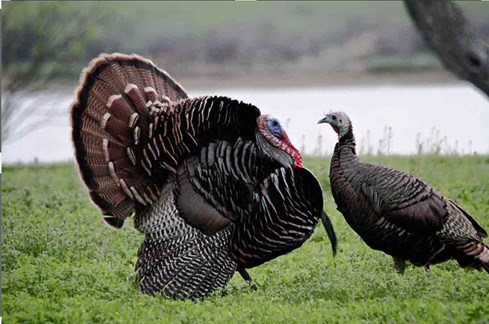
The Rio Grande turkey has an iridescent green and copper body with white and black bars on its wings. They also have brown tips on their tail feathers and lower back feathers. Rio Grande turkeys have very long legs because of the rocky terrain they inhabit. Toms can weigh up to 20 lbs. and hens can weigh up to 12 lbs.
The Rio Grande wild turkey is an extremely cautious bird. Many times, they suspiciously circle around a caller.
Merriam’s Wild Turkey
The Merriam’s wild turkey population sits at about 500,000 birds. These turkeys can be found in the mountainous areas of the Rocky Mountain states. They can be found as far south as New Mexico, following the Rocky Mountains, up through Colorado, Wyoming, Montana, Idaho and the high plains of the Dakotas and Nebraska. Their habitat includes areas with high altitude pine tree species such as ponderosa, lodgepole and whitebark pine trees.
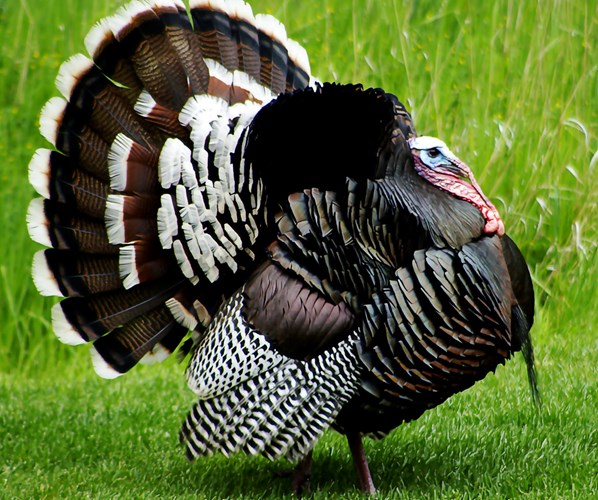
Merriam’s turkey have an iridescent purple and bronze body with white tips on their tail feathers and lower back feathers with more white than black bars on their wings. They have the shortest beards and smallest spurs of all subspecies. Toms can weigh up to 30 lbs. and hens can weigh up to 12 lbs.
Merriam’s wild turkey are found in the same habitat as elk so getting to good habitat can be strenuous. They are also harder to call than Rio Grande wild turkey.
Gould’s Wild Turkey
The Gould’s wild turkey are confined to the southern parts of Arizona and New Mexico. Their numbers in the United States are limited and thus have limited hunting opportunities. Fortunately, Gould’s wild turkey exist in large numbers in northern and central Mexico, offering hunters excellent opportunities if they are willing to head south of the border.
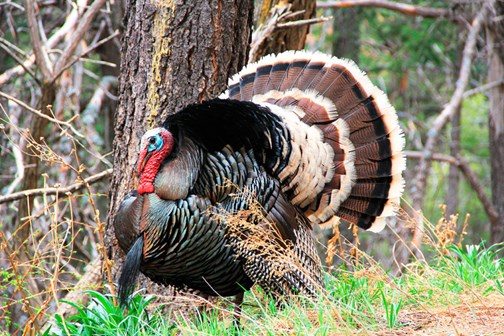
Gould’s are the largest of all the subspecies, with an iridescent green and gold body. They have white tips on their tail feathers and lower back feathers with uniformed coloration on their wings. Gould’s turkey have long legs like Rio Grande turkeys, because they also inhabit rocky and arid areas. The Toms can weigh up to 30 lbs. and the hens can weigh up to 12 lbs.
This turkey can be challenging to hunt. Gould’s wild turkey prefer arid and rugged mountainous areas of the southern desert making getting to their habitat difficult.
Osceola Wild Turkey
The Osceola wild turkey, also known as the Florida wild turkey, is found only in the southern portions of Florida. The Osceola turkey numbers are estimated at less than 100,000 birds. Like the Gould’s turkey, the taking of Osceola turkey is more regulated than the Eastern or Rio Grande turkey. Even though this sub-species is only found in Florida, hunting opportunities are still easy to obtain.
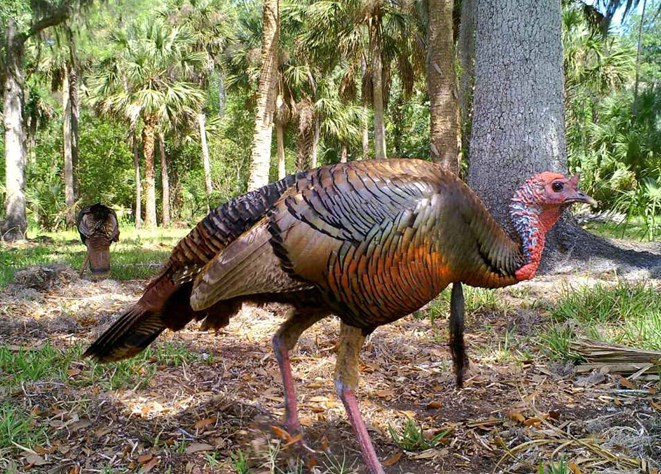
The Osceola turkey has an iridescent green and purple body with dark brown tips on its tail feathers and white and larger black bars on its wings. It is smaller and darker than the Eastern. The Toms can weigh up to 20 lbs. and the hens can weigh up to 12 lbs.
Osceola wild turkey are the most difficult of all the North American subspecies to call in. To make it even harder, the turkey inhabit dense undergrowth forest.
Ocellated Wild Turkey
The Ocellated wild turkey, a separate species altogether, can only be found in the Yucatan Peninsula region of Mexico, northern Belize and northern Guatemala. Because of the Ocellated wild turkeys’ remote jungle habitat in deep Central America, hunting opportunities may be limited. However, the most limiting factor in accessing these birds in getting to where they live internationally. Once the sportsperson makes travel plans and arrives in this subspecies range, finding hunting opportunities can be easier than the traveling.
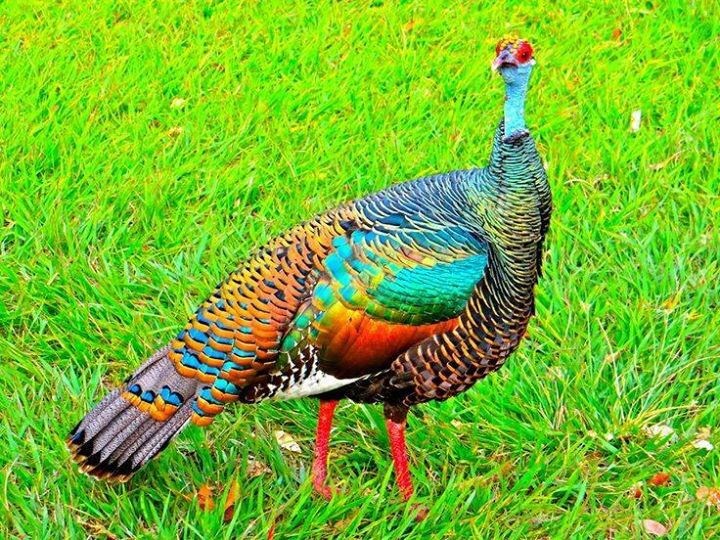
The Ocellated turkey has an iridescent multi-color body with gold tips on its tail feathers with blue and bronze spots on its feathers, and white and black bars on its wings. This species does not possess a beard but makes up for it with very long spurs. The Ocellated turkey is described by some as looking like a peacock because of its colorful feathers and bright blue head. These turkeys are the smallest of all the turkeys. The Toms can weigh up to 12 lbs. and the hens can weigh up to 8 lbs.
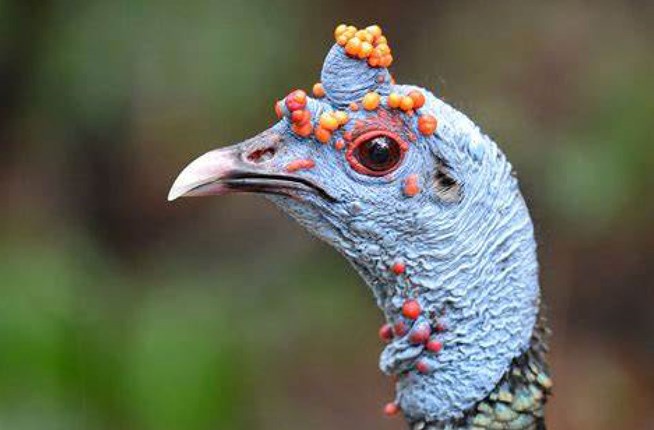
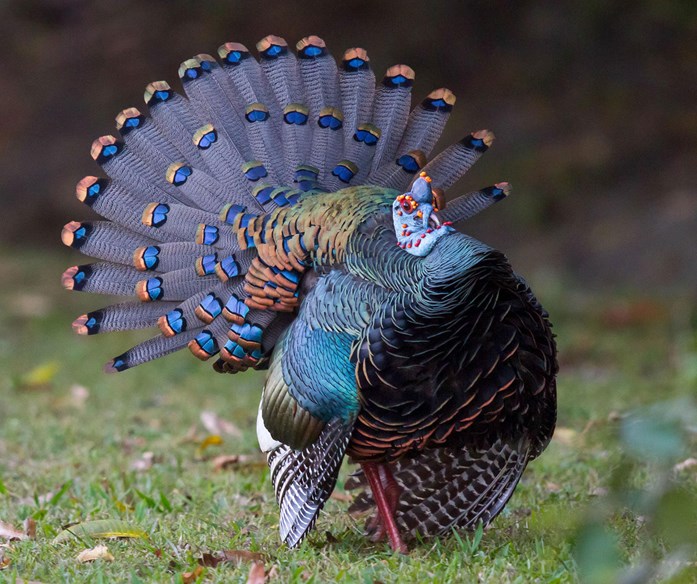
Hunting the Ocellated turkey has its own unique challenges. They are almost impossible to call in since they do not gobble like the North American subspecies. They are either shot from the roost or are ambushed on their travel routes.













